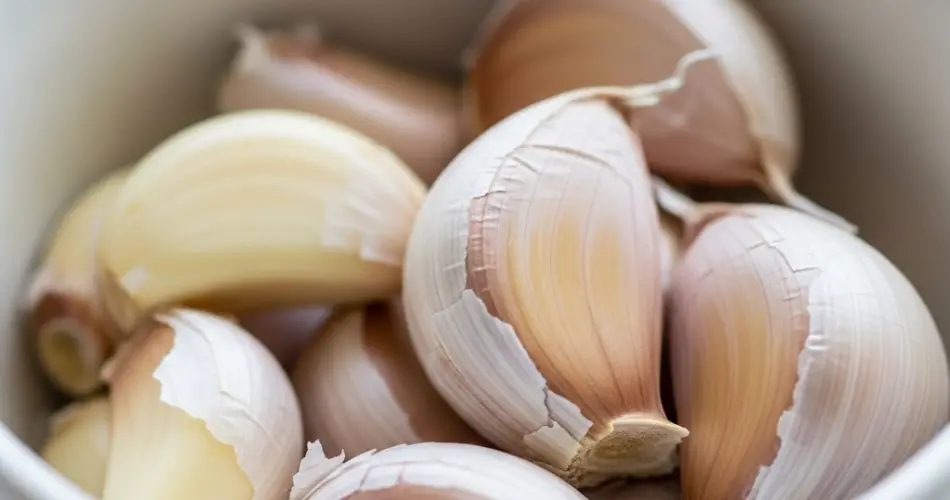Garlic is widely celebrated for its culinary and medicinal uses, but it also holds a powerful place in the garden. This humble bulb can do much more than add flavor to food—it serves as a natural fertilizer and an effective pest deterrent. Rich in sulfur and bioactive compounds, garlic boosts plant health while helping to keep common pests at bay. Best of all, garlic-based garden treatments are easy to make and completely organic.
Whether you’re cultivating vegetables, flowers, or herbs, incorporating garlic into your gardening routine can result in healthier plants and a more balanced garden ecosystem.
Why Garlic Works as a Fertilizer and Pest Control
Garlic contains natural compounds like allicin and sulfur, which have antimicrobial, antifungal, and insect-repellent properties. These compounds benefit plants in several ways:
-
Boosts immunity: The sulfur in garlic strengthens plant resistance to diseases like mildew and root rot.
-
Repels insects: Aphids, whiteflies, spider mites, and beetles dislike the pungent aroma and compounds in garlic.
-
Improves soil health: When used in a spray or as a soil drench, garlic supports beneficial microbial life and deters harmful pathogens.
-
Safe and sustainable: Garlic treatments are non-toxic to humans, pets, and pollinators when used correctly, making them an eco-friendly alternative to chemical pesticides.
How to Make Garlic-Based Plant Fertilizer
You can easily create a garlic fertilizer at home with just a few kitchen ingredients. This natural tonic will help nourish your plants and discourage pests.
Garlic Fertilizer Spray Recipe
Ingredients:
-
2 large garlic bulbs (about 16–20 cloves)
-
1 liter of water
-
1 tablespoon liquid dish soap (biodegradable, unscented)
-
Optional: 1 teaspoon chili powder or cayenne pepper for added repellent effect
Instructions:
-
Peel the garlic and blend with a small amount of water to form a paste.
-
Strain the mixture through cheesecloth or a fine mesh to remove solids.
-
Add the garlic liquid to a spray bottle or garden sprayer.
-
Mix in the rest of the water, add the dish soap, and shake well.
How to use:
-
Spray directly on leaves, stems, and the soil surface around plants.
-
Use in early morning or late afternoon to avoid leaf burn from the sun.
-
Apply once a week or after heavy rain for ongoing protection.
Garlic as a Soil Booster
Garlic water can also be used as a root drench to improve soil conditions and support root health.
Garlic Soil Drench Recipe
Ingredients:
-
5 garlic cloves
-
2 liters of water
Instructions:
-
Crush the garlic and steep it in warm water for 12–24 hours.
-
Strain and pour directly at the base of your plants.
This mild solution nourishes the soil with sulfur and helps combat fungal infections like damping-off and root rot.
Using Garlic to Repel Pests
Beyond fertilizing, garlic is an excellent natural pest control method. Its strong odor confuses and repels many garden pests. Here are some common problems garlic can help manage:
-
Aphids: Garlic spray deters aphid colonies from forming on tender leaves and stems.
-
Spider mites: The strong scent and antifungal properties help reduce mite infestations.
-
Fungus gnats: Garlic water applied to soil can discourage eggs and larvae.
-
Whiteflies: A regular misting with garlic spray can drive them away without harming the plants.
Tip: Rotate garlic spray with other natural remedies like neem oil or diluted vinegar to prevent pests from building resistance.
Companion Planting with Garlic
Growing garlic alongside other crops offers passive protection from pests and fungal diseases. Its pungent aroma confuses insects and makes the area less inviting to invaders.
Best companion plants for garlic include:
-
Tomatoes
-
Peppers
-
Roses
-
Fruit trees
-
Spinach
-
Cabbage family vegetables (like broccoli and kale)
Avoid planting garlic near beans or peas, as it may stunt their growth due to chemical interactions in the soil.
Garlic’s Limitations
While garlic is a valuable garden tool, it’s not a cure-all. Here are a few things to keep in mind:
-
Don’t overuse: Excessive garlic spray may damage sensitive plants or beneficial insects like ladybugs if applied too frequently or in high concentrations.
-
Store properly: Use freshly prepared garlic sprays and soil drenches within a day or two, as the active compounds degrade over time.
-
Test first: Before applying garlic spray to a large area, test it on a small section of the plant to check for any sensitivity.
Final Thoughts
Garlic is one of the most effective and accessible tools for organic gardeners. As both a fertilizer and a natural pest repellent, it helps plants grow strong and reduces reliance on synthetic chemicals. With just a few cloves and water, you can create your own garden tonic that supports plant health, repels pests, and enhances soil vitality.
Next time you reach for garlic in your kitchen, consider saving a few cloves for your garden. It’s a small effort that can lead to bigger, healthier harvests—and a more resilient garden overall.



